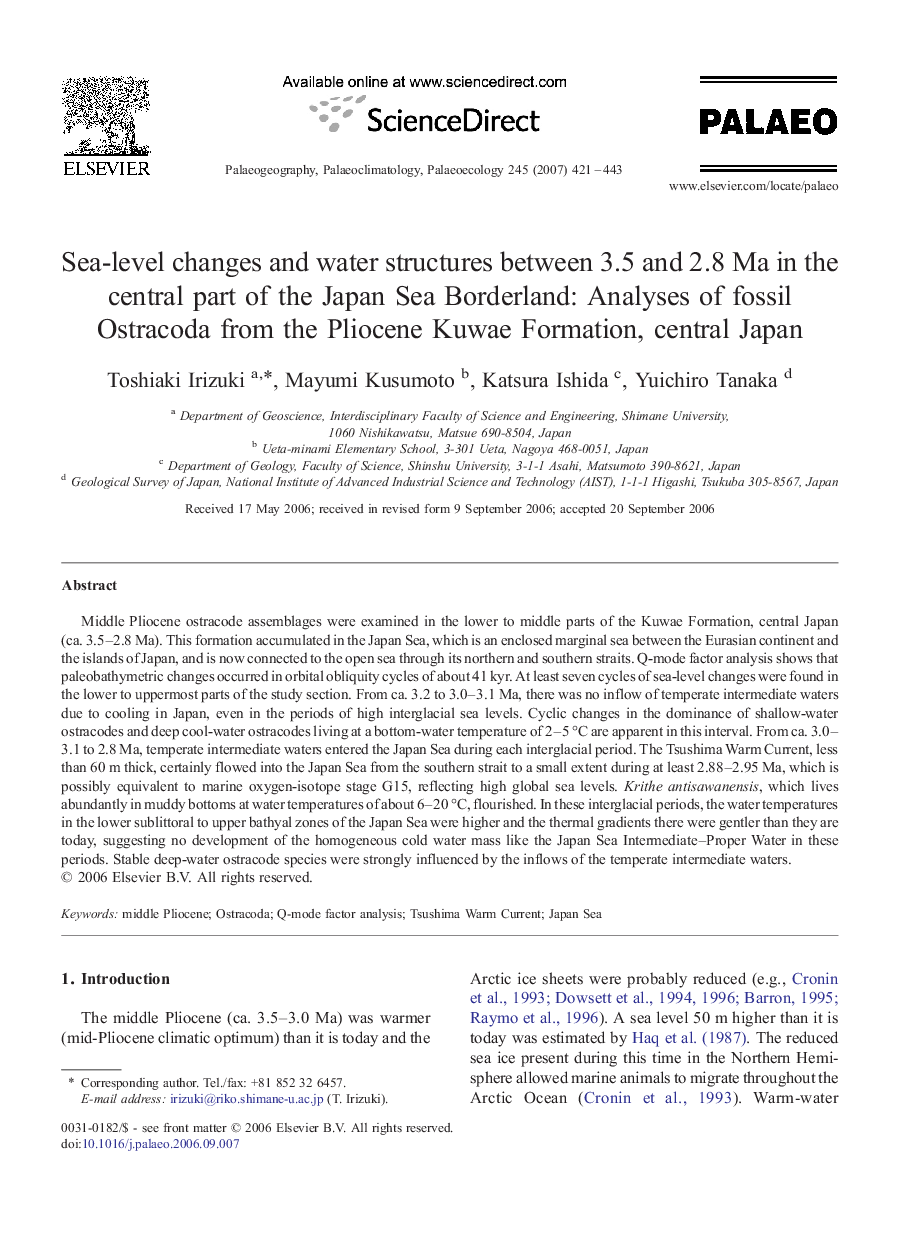| Article ID | Journal | Published Year | Pages | File Type |
|---|---|---|---|---|
| 4469059 | Palaeogeography, Palaeoclimatology, Palaeoecology | 2007 | 23 Pages |
Middle Pliocene ostracode assemblages were examined in the lower to middle parts of the Kuwae Formation, central Japan (ca. 3.5–2.8 Ma). This formation accumulated in the Japan Sea, which is an enclosed marginal sea between the Eurasian continent and the islands of Japan, and is now connected to the open sea through its northern and southern straits. Q-mode factor analysis shows that paleobathymetric changes occurred in orbital obliquity cycles of about 41 kyr. At least seven cycles of sea-level changes were found in the lower to uppermost parts of the study section. From ca. 3.2 to 3.0–3.1 Ma, there was no inflow of temperate intermediate waters due to cooling in Japan, even in the periods of high interglacial sea levels. Cyclic changes in the dominance of shallow-water ostracodes and deep cool-water ostracodes living at a bottom-water temperature of 2–5 °C are apparent in this interval. From ca. 3.0–3.1 to 2.8 Ma, temperate intermediate waters entered the Japan Sea during each interglacial period. The Tsushima Warm Current, less than 60 m thick, certainly flowed into the Japan Sea from the southern strait to a small extent during at least 2.88–2.95 Ma, which is possibly equivalent to marine oxygen-isotope stage G15, reflecting high global sea levels. Krithe antisawanensis, which lives abundantly in muddy bottoms at water temperatures of about 6–20 °C, flourished. In these interglacial periods, the water temperatures in the lower sublittoral to upper bathyal zones of the Japan Sea were higher and the thermal gradients there were gentler than they are today, suggesting no development of the homogeneous cold water mass like the Japan Sea Intermediate–Proper Water in these periods. Stable deep-water ostracode species were strongly influenced by the inflows of the temperate intermediate waters.
